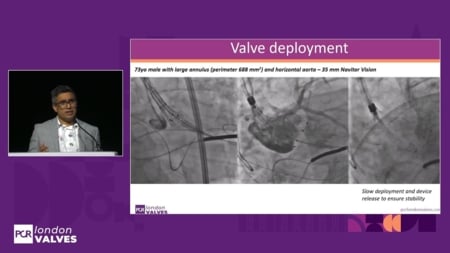02 Feb 2024
TAVI essentials: anatomical factors, prosthesis selection, and complication management
Summary
Discover a comprehensive exploration of critical considerations in TAVI in this section. From anatomical factors guiding the choice between TAVI and SAVR to strategies for selecting the optimal TAVI prosthesis for individual patients, each topic offers essential insights. Gain valuable insights into navigating TAVI for bicuspid anatomy, managing pure native aortic regurgitation, and addressing high gradients post-TAVI. Explore the ongoing challenges of paravalvular leakage in TAVR and learn about advanced imaging techniques for quantifying it. Delve into topics such as subclinical leaflet thrombosis and infective endocarditis after TAVI, providing a comprehensive view of this evolving field.
Learning Objectives
- To explore the specific considerations for the choice of optimal TAVI prosthesis, including in patients with bicuspid anatomy and pure native aortic regurgitation
- To discuss the multi-modality imaging diagnosis and treatment strategies for different valvular complications after TAVI
- To learn how to recognize, manage, and prevent complications following TAVI to enhance patient care
- To actively contribute to discussions with leading experts in the valvular disease imaging field




